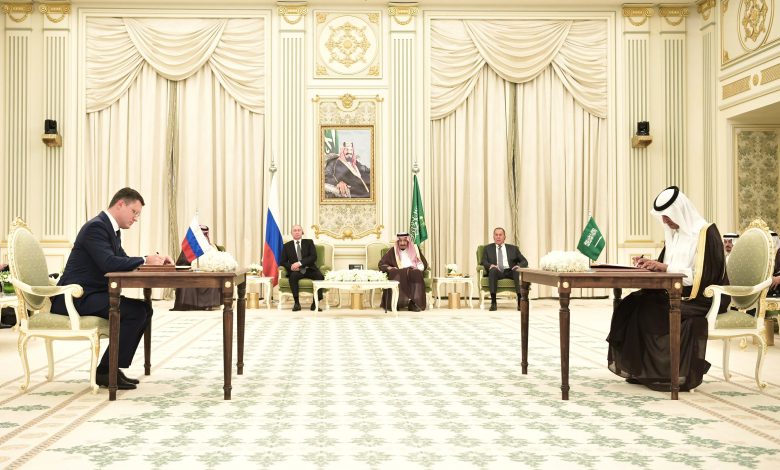Saudi Arabia and Russia are playing hardball in their oil standoff

[ad_1]
Russian Energy Minister Alexander Novak and Saudi Energy Minister Abdulaziz Bin Salman sign documents during a ceremony following a meeting of Russian President Vladimir Putin with Saudi Arabia’s King Salman in Riyadh, Saudi Arabia, on October 14, 2019.
ALEXEY NIKOLSKY | SPUTNIK | AFP via Getty Images
The standoff between oil majors Saudi Arabia and Russia could “last a while” as they wait for each other “blink first,” an analyst said Tuesday.
The oil markets tanked Monday, plunging over 20% amid already poor sentiment due to the coronavirus outbreak.
The oil slump followed a disagreement on production cuts between OPEC and its allies. Russia declined to lower output last week, and Saudi Arabia announced Saturday that it will offer discounts to its official selling prices next month. The kingdom is also reportedly planning to raise production.
“It’s always tough to pick a fight with Russia, with Putin,” said Robert Johnston, director of global energy and natural resources at the Eurasia Group, a consultancy.
“Now you have a standoff between Saudis and Russians over who will blink first. I do think this is going to last a while; I think this could be two to three months at least,” Johnston told CNBC.
As much as the squabble is about oil production and prices, it is also about challenging the narrative of U.S. energy dominance, he added.
The U.S. shale industry has changed the landscape for the global energy sector as the country heads toward becoming a net energy exporter.
“Russia has been pushing back against U.S. influence all over the world, so think this is tied to that. I don’t think that would be resolved in the next two or three weeks,” said Johnston.
It is an expensive and risky move by Moscow, which is a relatively expensive producer and it remains to be seen if they will be able to “kill shale or put it into hibernation,” he said. But, “they do have a lot of dry powder to work with here.”
There are already about 3 million barrels a day in crude oil oversupply this year, so any loss in U.S. supply due to producers being squeezed out in the low-price environment would not be bullish for prices, said Richard Gorry, managing director at JBC Energy Asia.
“If both parties stick to their guns, they are both playing extreme hardball right now, if that remains the case … we could see prices lower again,” said Gorry.
Benchmark international Brent crude oil futures were trading around $37 a barrel on Tuesday afternoon in Asia, while benchmark U.S. West Texas Intermediate was trading around $33 a barrel.
But the price plunge can “easily reverse if we get an agreement” to take supply out of the market. “There is still time to do it but there may be wider political interests at stake here also that complicates the picture,” said Gorry.
JPMorgan is forecasting $37 a barrel Brent crude on average for the second quarter of 2020 and $42 a barrel Brent crude for the third quarter of 2020. That outlook assumes the base case that Saudi produces 10.2 million barrels of oil a day in the coming quarters, up from the current 9.7 million barrels a day. In that scenario, Brent will average $44 a barrel this year.
But if Saudi produces 11 million barrels of crude a day by the end of 2020, the price of Brent will average $39 a barrel, said Scott Darling, head of Asia Pacific commodities research at JPMorgan.
Source link







